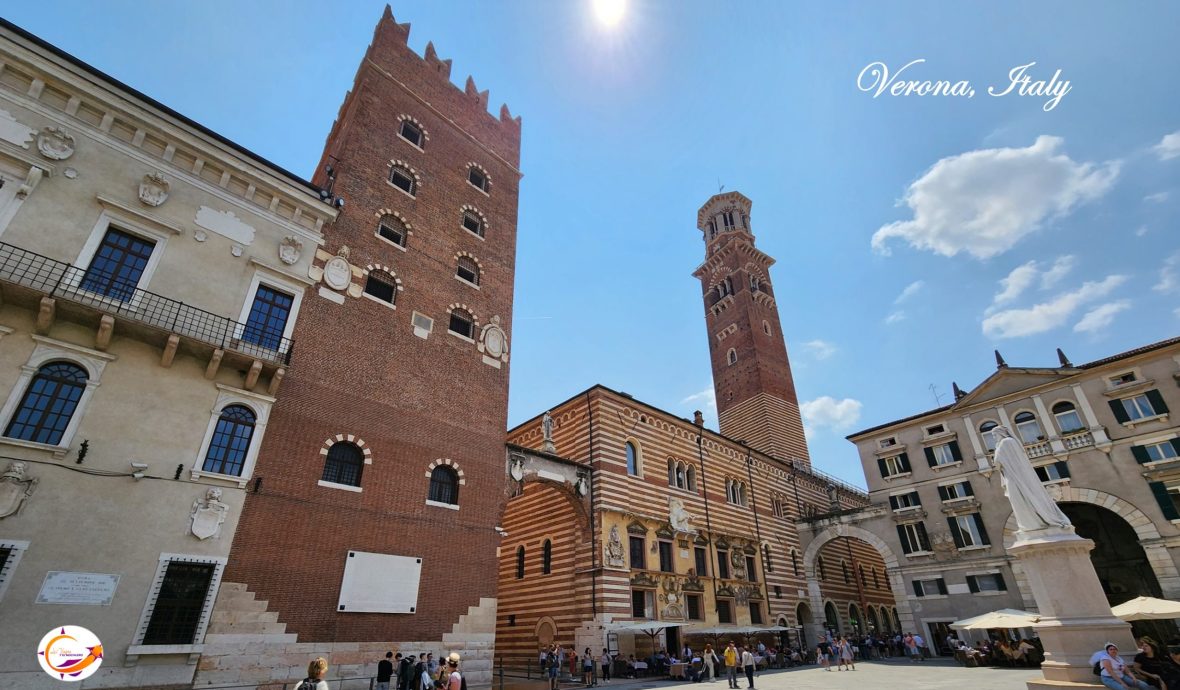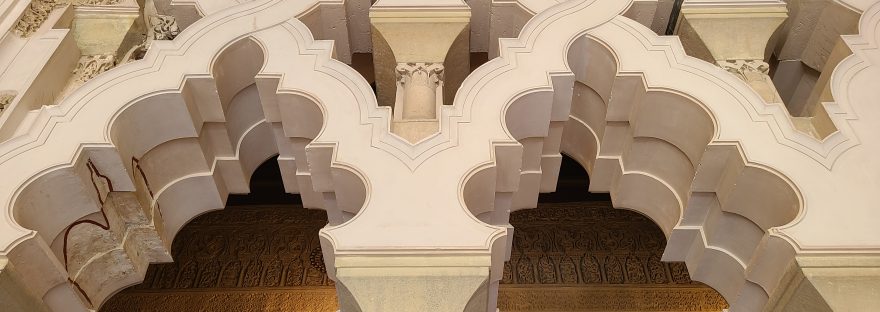The Aljafería Palace, a majestic fortified building, was built in Zaragoza, Spain during the second half of the 11th century. Its construction was ordered by Abu Ja’far Ahmad ibn Sulaymán al-Muqtadir Billah, known by his honorific title of Al-Muqtadir, “the Powerful”, as his recreational residence. The name of Aljafería is derived from the pronoun of Al-Muqtadir, Abu Ya’far, and from “Ya’far”, “Al-Yafariyya”, which evolved into “Aliafaria” and from there to “Aljafería”. Initially, the construction was carried out outside the Roman wall, on the plain known as La Almozara, a place where Muslims carried out their military exercises. With the passing of time and urban expansion, the building has been integrated into the city.
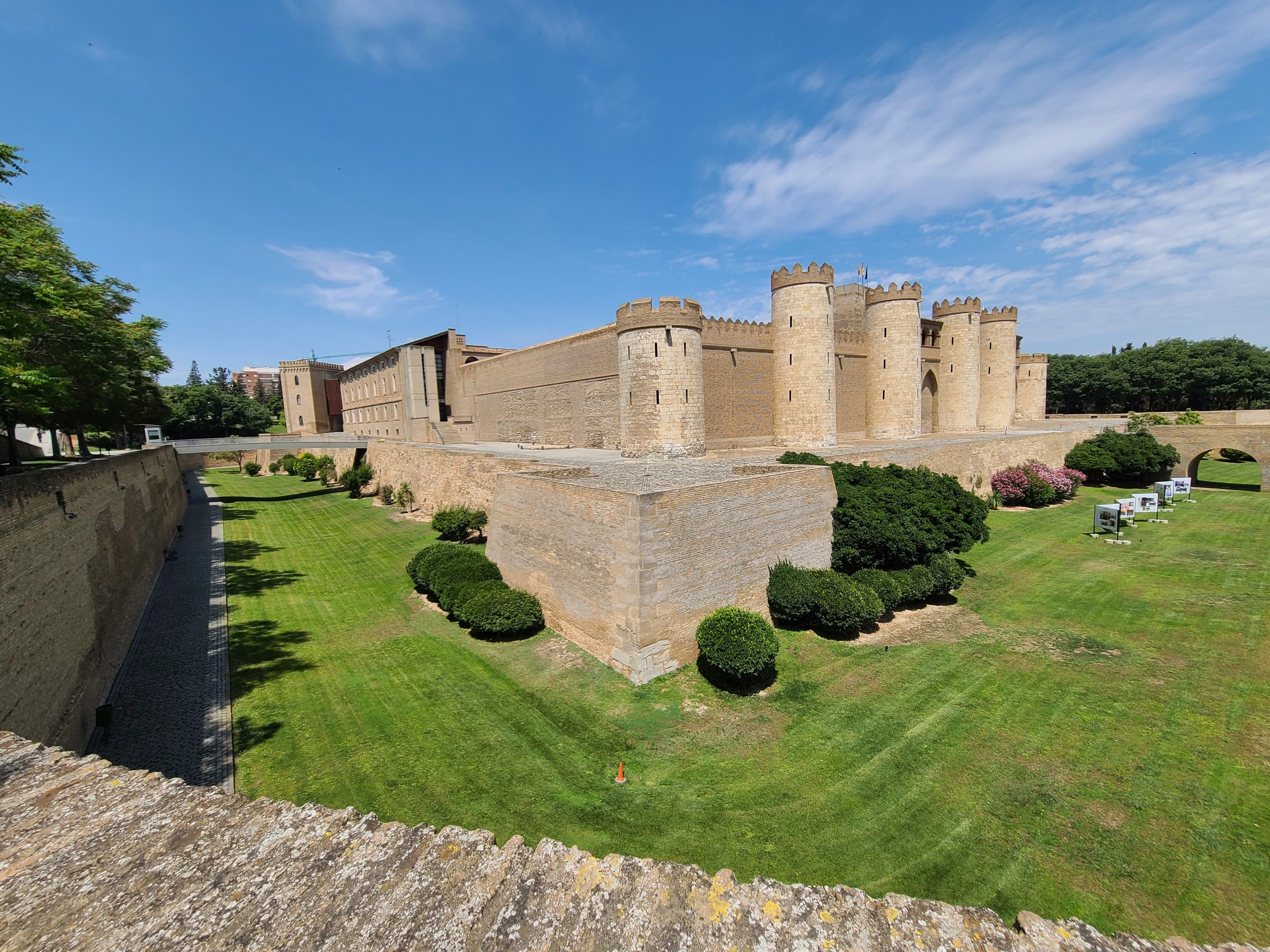
This palace, known in its time as “Qasr al-Surur” or Palace of Joy, is a clear reflection of the splendour achieved by the Taifa kingdom during its political and cultural peak, as reflected in the verses of King Al-Muqtadir himself:
Oh Palace of Joy! Oh Golden Hall!
Thanks to you I have reached the height of my desires.
And although in my kingdom I had nothing else,
for me you are everything I could wish for.
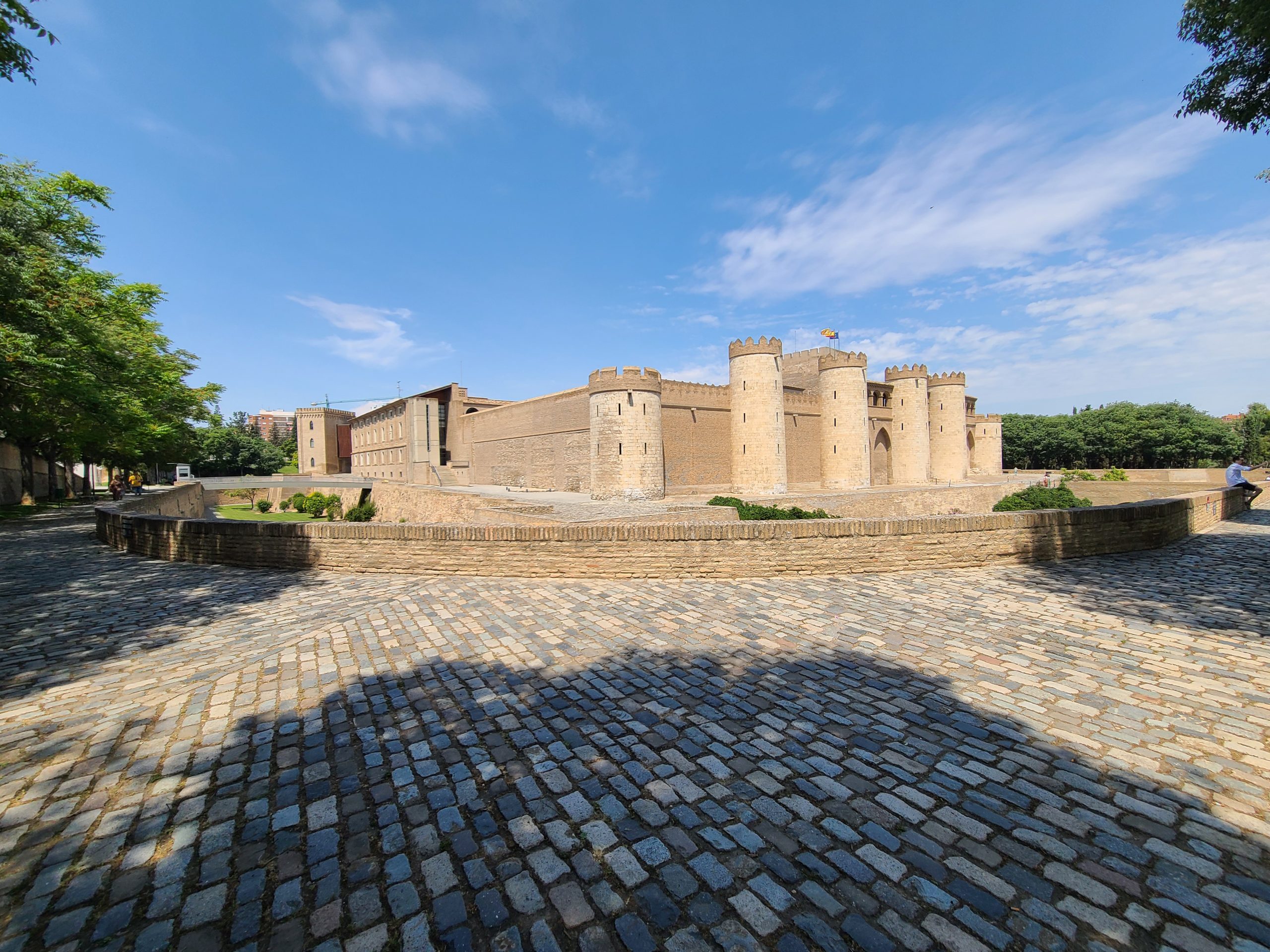
After the reconquest of Zaragoza in 1118 by Alfonso I the Battler (or the Warrior), the palace became the residence of the Christian kings of Aragon, becoming the main centre for the dissemination of Aragonese Mudejar. Pedro IV the Ceremonious (1319-1387) used this place as a royal residence, and it was on the main floor where the reforms were carried out that adapted the spaces to become the palace of the Catholic Monarchs in 1492.
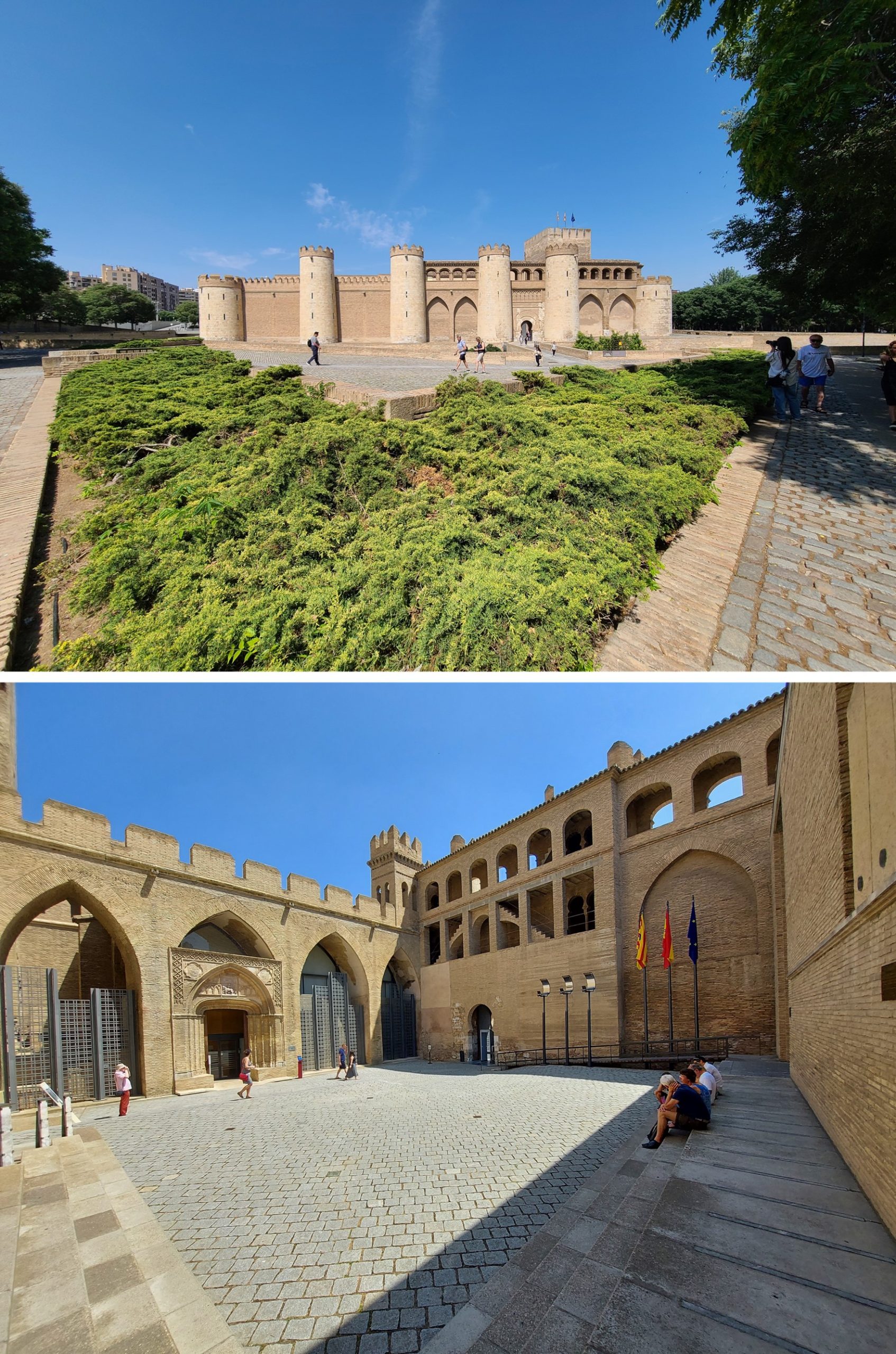
The Aljafería pays homage to the castle-palace model, whose noble area is located in the central area of its square floor plan, despite the fact that the alignment of the sides of said floor plan is irregular. The central rectangle houses the palace quarters, organized around a courtyard with cisterns, which is located in front of the north and south porticoes, from which the royal rooms and halls are accessed.
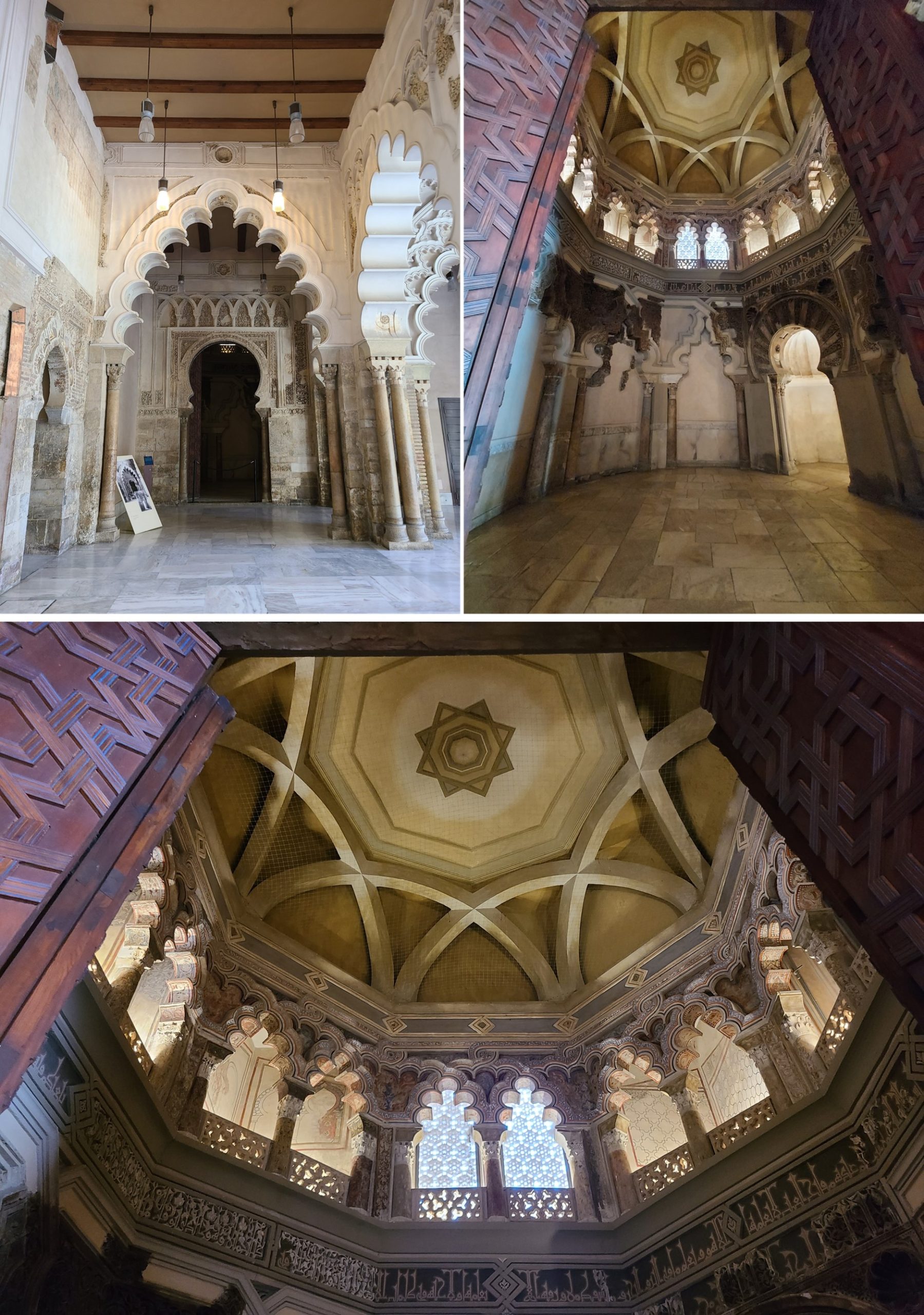
Its rooms hold secrets such as the “Mirhab”, which served as a mosque or private oratory for the Muslim king and his court, built in the 11th century and facing Mecca. It is accessed through a door with a horseshoe arch, inspired by the Mosque of Cordoba. Another of its secrets is the Marble Hall or Golden Hall, which was the main room of the Palace. The coffered ceilings, geometric openwork plasterwork illuminated by semicircular windows are just some of the decorative elements of the Mudejar style that masterfully enrich the Aljafería.
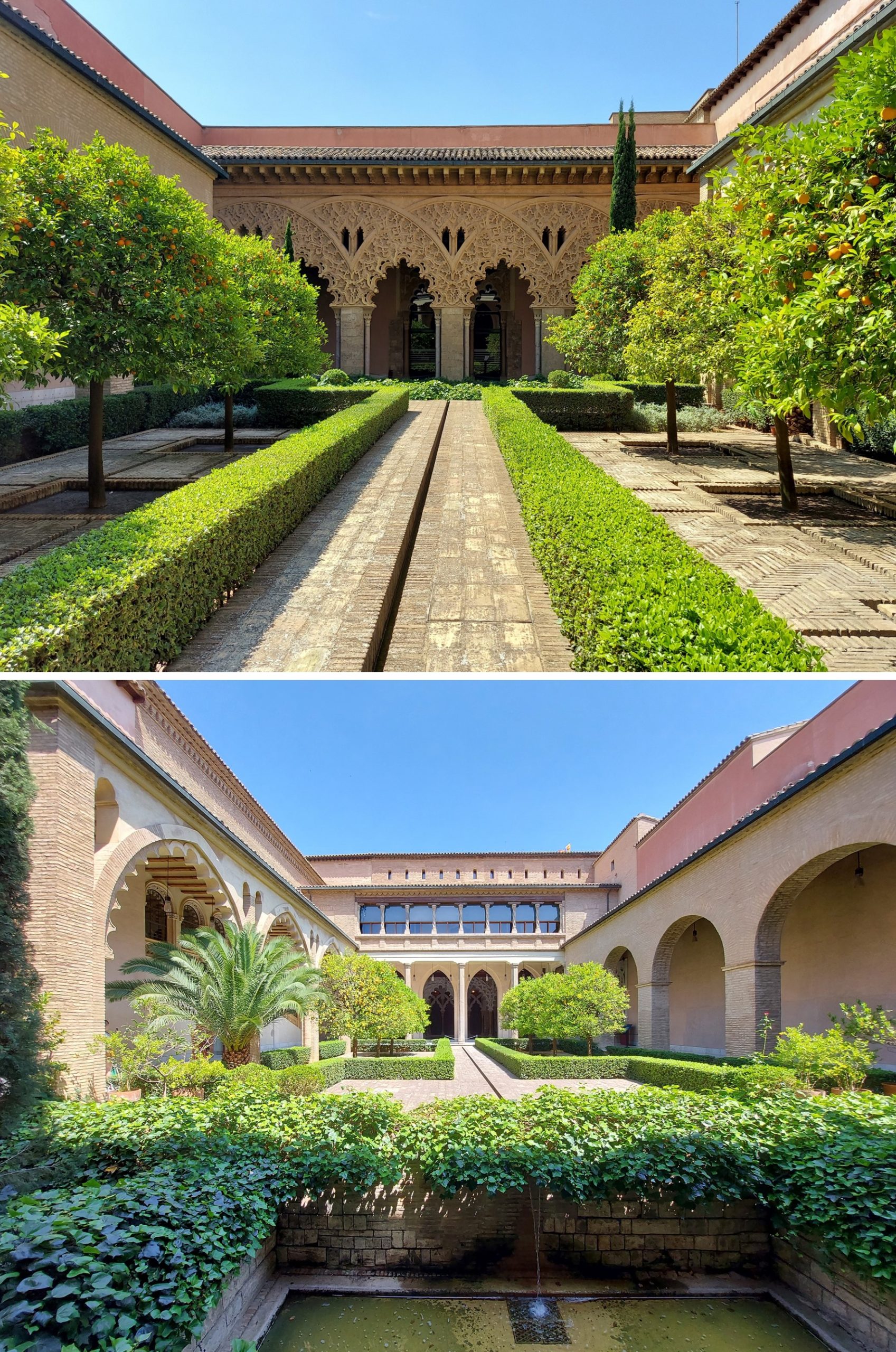
The Patio of ait Elizabeth is the open and landscaped central space that unifies the entire Taifa palace. Its name comes from the birth in the Aljafería of the Infanta Isabel (Elizabeth) of Aragon, who was queen of Portugal in 1282. The original pool on the south side of the patio has been preserved, while the one on the north side, which dates back to the 14th century, has been covered with a wooden floor. The restoration sought to return the patio to its original splendor, for which a marble floor was installed in the corridors surrounding the orange and flower garden.
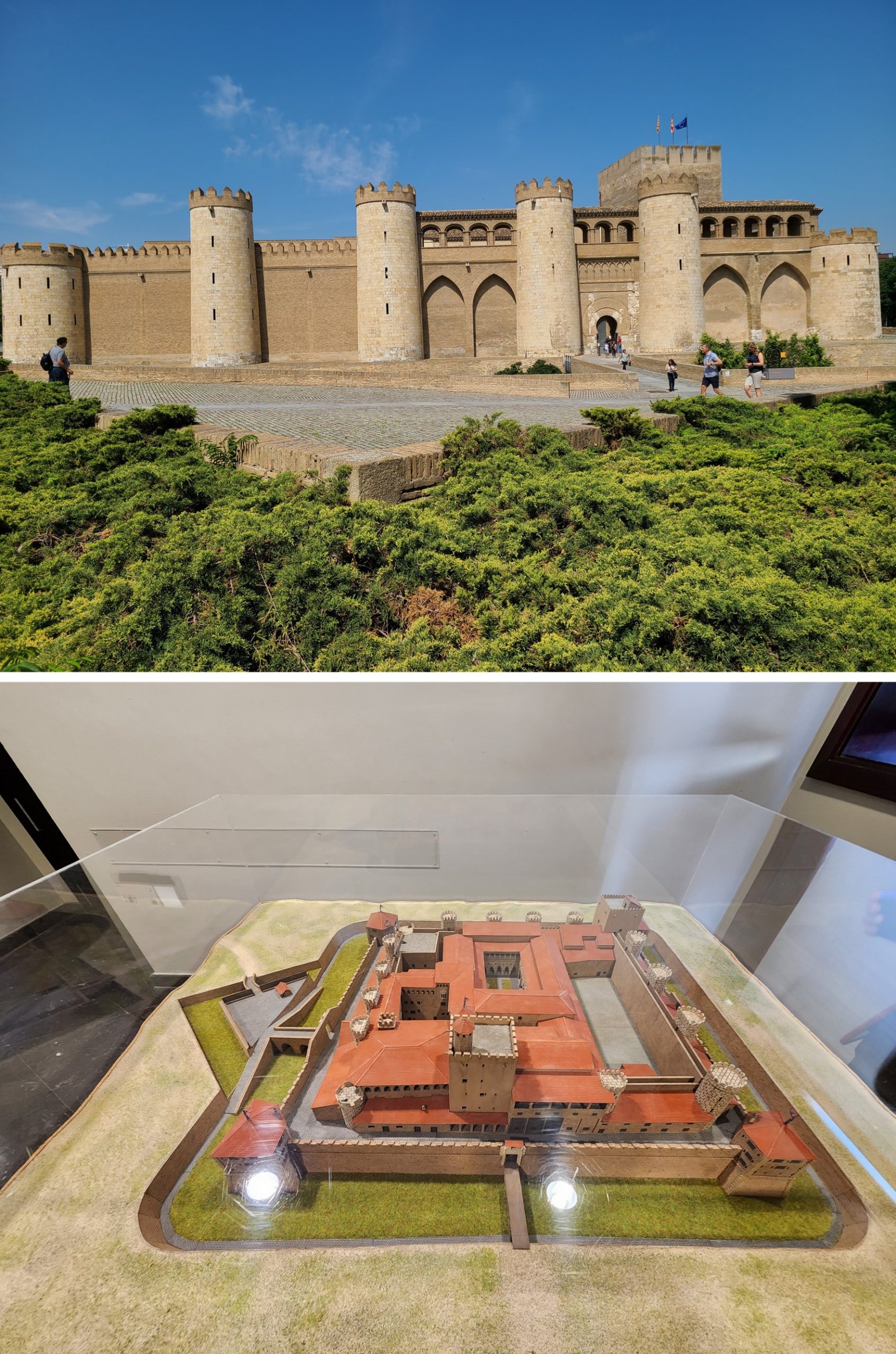
The oldest building in the Aljafería Palace is the so-called “Torre del Trovador”, a defensive tower with a quadrangular floor plan and five floors dating from the end of the 9th century. Its name comes from Antonio García Gutiérrez’s romantic drama, “El trovador”, from 1836. This drama was converted into the basis for Giuseppe Verdi’s opera “Il trovatore”, from 1853.
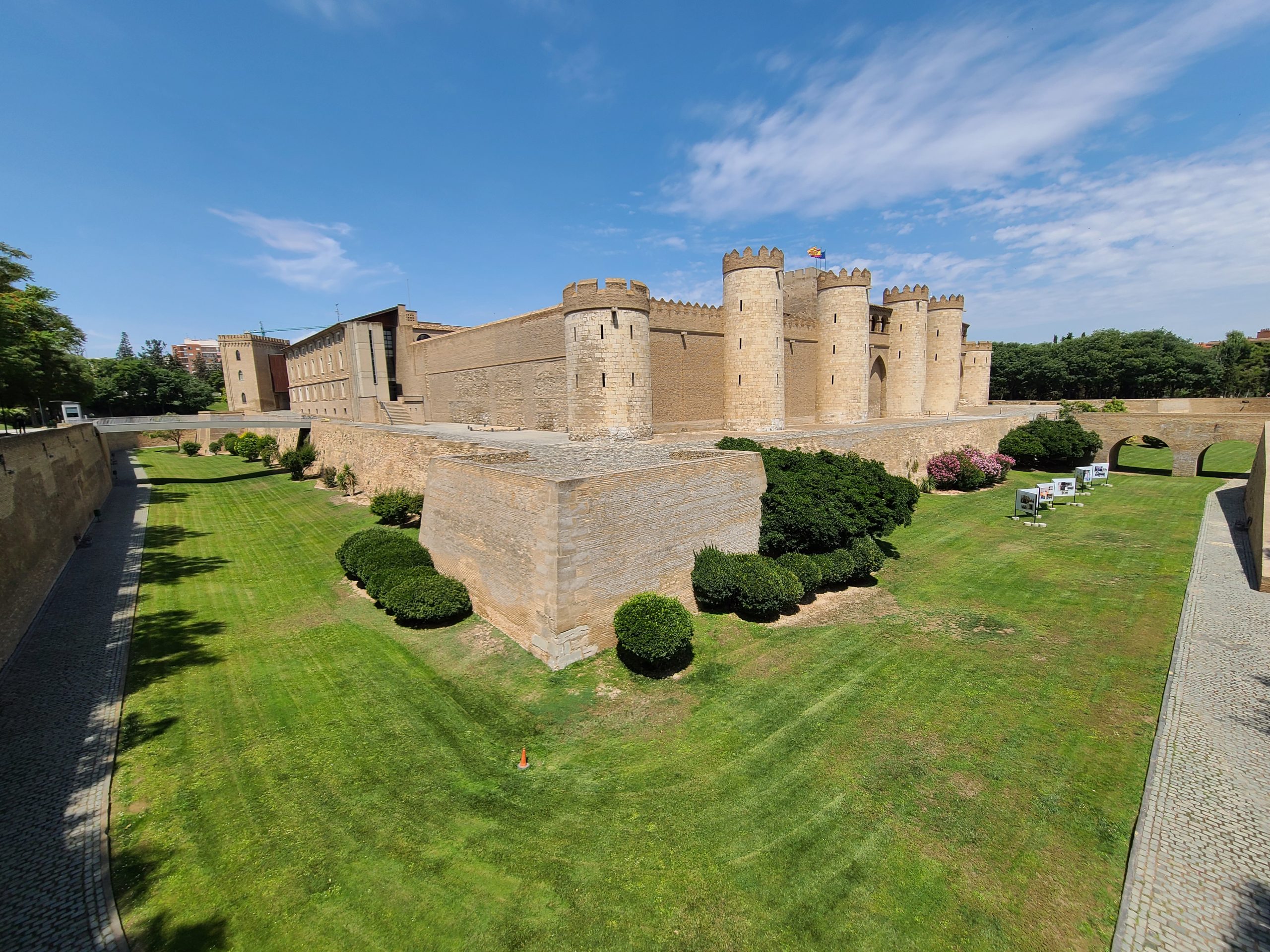
In 1593, a new reform transformed the building into a military fortress, first following Renaissance designs, whose vestiges still remain in its surroundings, moat and gardens, and then as a barracks for military regiments. Over the years, the Aljafería underwent continuous transformations and suffered great damage, especially during the Sieges of Zaragoza in the War of Independence, until it was finally restored in the second half of the 20th century and today houses the Courts of Aragon.
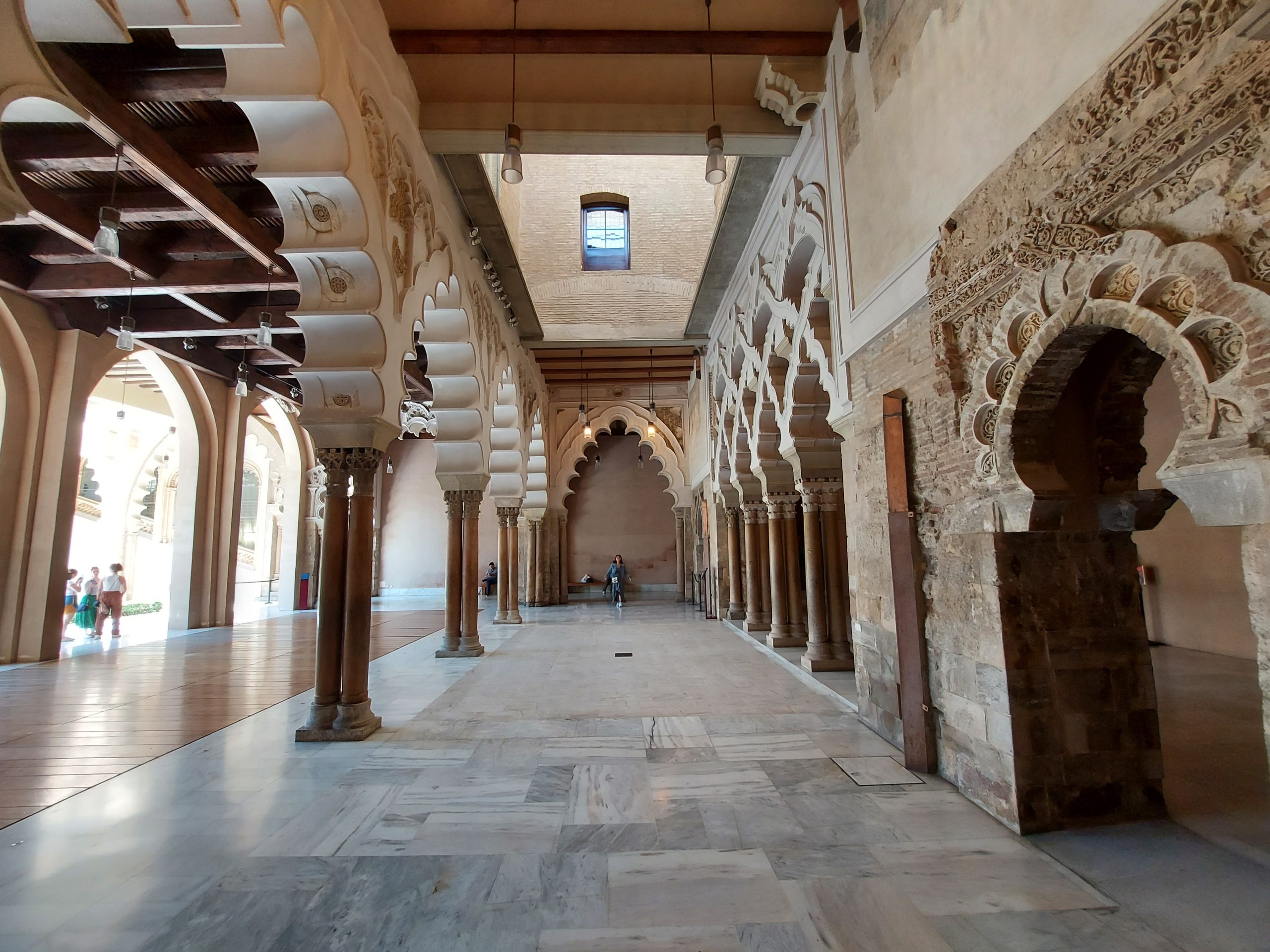
Ten centuries later, the magnificent “Palace of Joy” dreamt up by the Muslim monarch Al-Muqtadir remains, along with the Alhambra in Granada and the Mosque of Cordoba, one of the most precious artistic jewels of the Muslim influence in southern Europe. In 2001, UNESCO declared the Mudejar art of Aragon a World Heritage Site, highlighting that the Aljafería palace is one of the most emblematic monuments of this style, becoming a symbol of Aragonese civil architecture and, without a doubt, one of the essential references of the history and culture of Spain. For us, getting there was one of the most gratifying experiences of our visit to Zaragoza.

